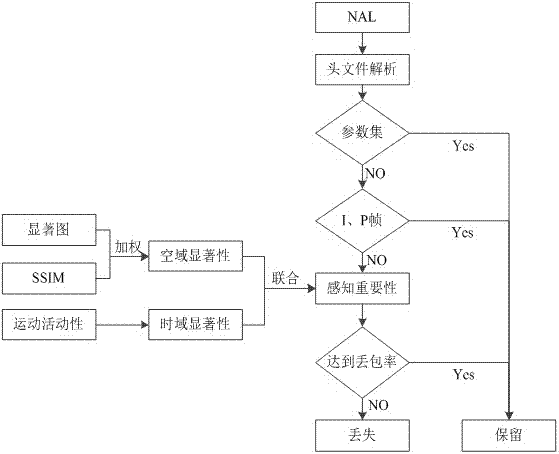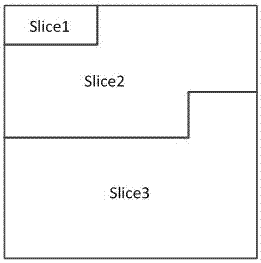Content based video package priority assignment method
An allocation method and priority technology, applied in the field of video transmission technology utilization, can solve problems such as affecting the perceived quality of transmitted video
- Summary
- Abstract
- Description
- Claims
- Application Information
AI Technical Summary
Problems solved by technology
Method used
Image
Examples
Embodiment 1
[0050] Embodiment one: see Figure 1~6 , a content-based video packet priority assignment method, comprising the steps of:
[0051] a. Primary allocation of stream packet priority;
[0052] b. Spatial perception importance extraction: after the primary allocation of each frame image, calculate the salience and corresponding SSIM of each slice, and use the salience as the weighting factor of SSIM to represent the spatial perception quality, and the larger the value, the more important the spatial perception the higher the sex;
[0053] c. Binarize the value of spatial perception quality obtained in step b, and divide the video image into a salient area, which is set to "1" and a non-salient area, which is set to "0"; for each slice, the binary value Normalize the result, if it is non-zero, then the slice is judged to be spatially perceptually significant, otherwise it is non-perceptually significant;
[0054] d. Time domain perception importance extraction: Calculate the amp...
Embodiment 2
[0059] Step 1. Primary allocation of code stream packet priority: When 5 consecutive packets are lost, set the priority of the next packet to be high, and the priority index is directly written into the NAL header file; then judge the data type, if it is a parameter set, it has the highest priority; if it is an I, P frame, give it the second highest priority; if it is a B frame, go to step b. The code stream after video encoding takes NAL as the unit. During the transmission process of the code stream in the channel, the NAL header file of each data packet is first analyzed to determine its basic data type. If it is parameter set (PPS, SPS, VPS) information, which contains the encoding information of the entire video, it has the highest priority, ensuring that it cannot be lost during transmission; if it is I frame or P frame data, as a reference for subsequent frames, it has The second-highest priority, and the proportion of I frames and P frames in the video is relatively sm...
PUM
 Login to View More
Login to View More Abstract
Description
Claims
Application Information
 Login to View More
Login to View More - R&D
- Intellectual Property
- Life Sciences
- Materials
- Tech Scout
- Unparalleled Data Quality
- Higher Quality Content
- 60% Fewer Hallucinations
Browse by: Latest US Patents, China's latest patents, Technical Efficacy Thesaurus, Application Domain, Technology Topic, Popular Technical Reports.
© 2025 PatSnap. All rights reserved.Legal|Privacy policy|Modern Slavery Act Transparency Statement|Sitemap|About US| Contact US: help@patsnap.com



